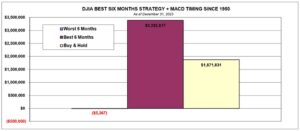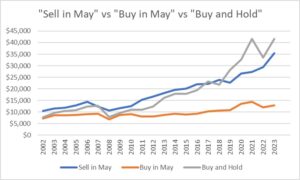Simple Pleasures…

Walking the dog on the beach.
Simple Pleasures…

Walking the dog on the beach.
On COVID Lies and Failures
GM sent in an essay by Alex Berenson titled “Team Apocalypse will not quit.” It starts like this:
“The fact that public health bureaucrats and their pet science reporters are still lying about their COVID failures is maddening. But the fact they keep pressing for more ‘pandemic preparedness’ and risky and hyper-fast vaccine development is not merely maddening. It’s dangerous.”
Read more here.
Conspiracy Theory?
From BW re my speculations in the May 3 issue about Taylor Swift’s remarkable success:
“She sold her soul to the devil. She is a demon, possibly reptilian. Heard this a while back along with a couple other pop/rap artists that seemed to come out of nowhere. Rumor has it these others have straight-up claimed it.
“Not sayin’ I believe this – but, hell, ya never know…”
From Far Out Magazine: 10 Movies too controversial for cinema
I was intrigued enough to read the listicle and even watch the trailers. I suppose I was hoping for a smorgasbord of outlandish fare. A few were bizarre, including two I’d already seen decades years ago. Among the others, I put four on my “to-watch” list.
Take a look. I’d be curious to know if you were motivated to do the same.
Tired of the Relentless Struggle to Stay Lean?
Thinking (Like Me) About Oprah and Ozempic?

Oprah’s many struggles with her weight appear to be over. Thanks to her recent highly publicized success with weight-loss drugs, their use has surged in popularity. And she’s not the only celebrity talking about their impressive results with Ozempic and its cousins.
Would it work for me? I don’t know.
Two of my relatives lost a ton of weight by getting Ozempic injections. One went from about 265 to 195, and the other from about 205 to 165. One had digestion issues the first few weeks, which disappeared when the doctor cut his dosage in half. The other felt some fatigue for a month or so, but now feels that he has even more energy than he had before he started on the drug. Plus, the aches and pains of being in his late 60s are fewer, he says, because of the weight loss.
Another relative has begun taking Wegovy – basically the same drug (semaglutide, which has typically been used to treat type 2 diabetes), except it’s a higher-dose version that was approved for weight loss. He’s only five weeks into it, but has started to shed pounds.
As you may remember, I began a weight-loss experiment of my own earlier this year – eating only one meal a day and limiting myself to eating for only one hour. It was taking the pounds off. Not as quickly as I would have hoped, but my weight was dropping. On the downside, the high level of mental discipline it required did not diminish over time.
Luckily, someone sent me an article from some magazine arguing that long-duration fasts are unhealthy. I didn’t bother to double-check the claims made in the article. My will power gauge was near empty. I went back to the old, midnight-grazing diet I was so accustomed to, and, sure enough, those lost pounds found their way back to me.
This was not the first time I gained and lost (and eventually regained) weight. In fact, now that I think about it, it happened each time one of our children was born. Commonly, it is the woman that gains weight during pregnancy and then struggles to lose it afterwards. For some cruel reason, nature had a different idea for us. K and I both got bigger together during each pregnancy. But after the baby was born, K went back to her former slimness within weeks, and it took me months – sometimes many months – to get back to my fighting weight.
After our third child was born in 1988 when I was 38, I got lean and fit before I turned 40. And I stayed that way for nearly two decades… until Number Two son and his wife had a baby. Well, I’ll be damned, but my instinctive sympathetic metabolism kicked in, and I’ve been on a roller coaster ride ever since. It’s no wonder I couldn’t make this last attempt at weight loss work. Number Three Son and his wife just had their second baby on Tuesday. So, here we go again!
By now, if you are still with me, you must be wondering: “Just how fat is Mark? After all, he’s the guy that’s always talking about working out so hard six days a week and competing in jiu jitsu tournaments and all that.”
Knowing this question would be at the top of your mind, I went online to determine my Body Mass Index. The BMI is a simple ratio that estimates how fat someone is by using just three factors: height, weight, and gender.
As a 5’10”, 224-pound man, I have a BMI of 30+%. That puts me well into the “obese” category.
But I don’t look obese. And my trainers and even my wife agree. I’m just “thick,” they tell me.
My trainers say the BMI is useless because it takes into account neither the density of your bones or the amount of muscle you have on your body. A strong-boned, 5’10” body builder could easily have a 32-inch waist and a true body fat percentage of 6% and the BMI would still classify him as obese.
Of course, I don’t have a 32-inch waist. I buy my pants with what I consider to be a respectable waistline (36 inches) for a man of my age. However, at this point in time, trying to fasten them takes a considerable amount of effort.
You can get a more accurate measurement of body fat and lean muscle mass with calipers or electrical stimulation. In the past, when I measured 30+% on the BMI scale, my actual body fat percentage, according to those more accurate measurements, was in the mid 20s.
So, no. I’m not obese. I’m thick. But I’d like to be less thick.
One of my trainers says my “ideal” weight would be about 205. Another says 195. Either way, I’m looking at dropping 20 to 30 pounds. So, it’s either back to a strict diet of some sort… or I can take a tip from Oprah and my relatives and go Ozempic!
My Doctor’s Surprising Response
It so happened that I had a visit with Dr. B, my VIP MD, a few weeks ago – the once-a-year visit where he checks my bloodwork and we talk martial arts. (He’s a karate guy, but still.)
My numbers were pretty good… aside from the fact that, as he pointed out, I am eight pounds heavier than I was last year. So I told him about my failed one-meal-one-hour-a-day experiment. I also told him about the success my relatives have had with semaglutide injections and asked him what he thought about it.
Dr. B is a conservative physician. So, I was surprised that he didn’t dismiss the idea out of hand. He told me that some of the diabetic and prediabetic patients he’d been treating with the injections had not only lowered their risk of developing major cardiovascular problems but were also losing lots of weight.
But he added that both Ozempic and Wegovy come with negative side effects – most of them minor, such as burping and bloating, though there have been reports of more serious problems.
The Research: Reports and Studies
When I got home, I did some googling that confirmed everything he said, including this:
* In trials of Ozempic (1mg dose), 30.8% reported gastrointestinal symptoms, including nausea (20.3%), vomiting (9.2%), diarrhea (8.8%), abdominal pain (5.7%), and/or constipation (3.1%).
* In trials with Wegovy at the higher dose (2.4mg), 74% reported at least one GI disorder: nausea (44.2%), vomiting (24.8%), diarrhea (31.5%), abdominal pain (10.0%), and/or constipation (23.4%).
And I found some evidence of the much more serious side effects Dr. B had mentioned. One study, for example, on semaglutide causing thyroid cancer in rodents, and two studies indicating a possible connection between the drug and organ damage (kidneys and liver).
But because the very serious side effects are rare, and because there is no sure evidence that they are the result of the injections themselves or other factors – and because there have been reports of rare, serious side effects for virtually every drug I’ve ever studied – I came away from my little bit of research with a new plan in mind.
What to Do?
Here’s my plan.
I’m going to try my experimental diet again. If I fail at that, I have a somewhat less extreme version, which allows for two small additional meals (breakfast and lunch) of 200 to 300 calories of pure protein.
If that doesn’t work, then I’m going to try the most extreme diet I have ever undertaken, which lasted for more than a year and worked very well: I’m going to stop drinking wine and tequila.
Well, maybe I won’t do that. We’ll see.
Given Dr. B’s relative openness to semaglutide, and considering the rarity of serious side effects that have been associated with it (so far), I might consider getting on the Oprah highway and losing weight with the magic of pharmacology.
Most Americans Don’t Know These Basic Facts About Our Population
An interesting poll from YouGov provides an idea of how out of touch Americans are with reality.
Question: What percentage of the American population is Black?
* What the Average American Thinks: 41%
* The Reality: 12%
Question: What percentage of the American population is Hispanic?
* What the Average American Thinks: 39%
* The Reality: 17%
Question: How many families make over $500,000 a year?
* What the Average American Thinks: 26%
* The Reality: 1%
Question: What percentage of Americans are vegetarians?
* What the Average American Thinks: 30%
* The Reality: 5%
Question: What percentage of Americans are gay?
* What the Average American Thinks: 30%
* The Reality: 3%
Question: What percentage of Americans are transgender?
* What the Average American Thinks: 21%
* The Reality: 1%
And perhaps my favorite…
Question: What percentage of Americans live in NYC?
* What the Average American Thinks: 30%
* The Reality: 3%
Funny… You Should Ask
I gave up on Saturday Night Live after the original cast (including Dan Ackroyd, John Belushi, Chevy Chase, Jane Curtin, and Gilda Radnor) and the original writers were replaced by less talented performers and more politically correct writers. Over the years, SNL degraded from a quirky and sometimes brilliant comedic experiment that tested the boundaries of acceptable social satire to a weekly production of predictable softball spoofs of liberals and meanspirited mockery of conservatives.
Fundamental Rule of Comedy: Humor that mocks and condescends is not funny. It is insulting to those it targets, and energizes antipathy toward those it seeks to represent.
Great humor operates on a deeper level by highlighting human frailties, failings, and absurdities that are universal – follies that, being so common, tend to amuse and delight the full spectrum of audiences that are exposed to it. By identifying human folly in a loving way, it elevates and unites – rather than debases and divides – all those who partake of it.
While SNL was losing market share over the years by playing it safe and correct, a new form of social satire was developing by taking on the challenges that SNL had retreated from and by pushing the comedy envelope farther towards the edge of convention and respectability. It was every bit as bold and uncensored as the original productions of SNL, but, looking back at televised episodes now, I can see that in many cases it actually went further and cut more deeply.
Despite numerous recommendations from friends that I should investigate it, I didn’t because of the medium: cartoons. I dismissed the format as frivolous.
The one exception was Beavis and Butt-Head, which could be considered unifying only in the sense that its target is a stage of life that most of us experience for some portion of our adolescent and teenage years. It was silly and juvenile, and I thought it was hilarious.
That is why, when I came upon this video clip of a Beavis and Butt-Head bit on a recent episode of Saturday Night Live, I was curious enough to click on it.
While it was not in any way pushing any boundaries, it did make me laugh, and that gave me hope. It made me wonder if Lorne Michaels, after struggling for decades against SNL’s diminishing market share, may be redirecting the once-lauded series back to being as good as it once was.
It also made me wonder if Beavis and Butt-Head was as good as I remembered it.
I found this video online – “The 10 Funniest Beavis and Butt-Head Moments” – and took a look.
Unhappily, though I still thought it was funny, it wasn’t belly-laugh funny as it once was for me.
So I took a gander at some of the cartoons that I’d been ignoring for so many years – The Simpsons, South Park, and Family Guy – and, as my friends had claimed, they were very good. Funny without, I think, being divisive. But could that be because they tend to satirize the kind of ideas that I find in need of satirizing at this point in my life?
“Comedy is simply a funny way of being serious.” – Peter Ustinov

The New Angst Over Grade Inflation
There are a few rules of life that anyone over 30 understands from experience. Among them is that making challenges easier for your children, your mentees, your employees, and your students will make them less capable of being successful after they’ve gone from your protective shield.
And yet, so many people that should know better continue to believe that lowering educational and other performance standards is a good thing because it will widen the circle of students that make it through school and emerge with diplomas.
The fact is, it is impossible to upgrade to a realm of equality for humanity in any respect. We humans are designed not just to be unequal because of the equipment we are supplied with at birth and the environment (culture) we grow up in, but also because each one of us develops his own point of comfort along the range of competence in any and every endeavor.
Lowering standards does not change the bell curve. At all. It only lowers the achievement levels of everyone on it, from top to bottom.
This article addresses the point with only a minimal understanding of what I’ve just said. But it nevertheless (and perhaps unwittingly) displays the impossibility of ever improving performance by lowering standards.
Big Win!
Good news for my family and all Americans building structures on land that they own. In the last several decades, state and local municipalities have begun to charge such landowners so-called “permitting fees” (cash fees and/or partial land compensation) for building on properties they may have owned for years. In the case in question, a homeowner was charged a permitting fee for an imagined future impact that was neither real nor even planned.
One thing that governments do well is to figure out ways of raising their budgets by inventing new fees and taxes. But this decision was 9 to 0 against that. Click here.
Debates That Work the Way They Are Supposed to Work
The Oxford Union debates have become increasingly popular in recent years because they require the debaters and the audience to follow strict codes of conduct. That discipline creates an actual “safe space” for participants to make their arguments and their rebuttals in a structured way that allows for both sides to fully air their views.
Click here to watch an example: Winston Marshall debating Nancy Pelosi on whether populism is a threat to democracy.

Once Again, the Idea of a Wealth Tax Surfaces
In the new global/socialist age, the desire to tax and redistribute income and wealth is greater than ever. And the good people of the UN and G-20 are doing everything they can to reduce the gap between the very rich and everyone else.
The latest brainstorm arrives in a proposal by four countries in the G-20 to impose a 2% wealth tax on the world’s billionaires. And don’t think this couldn’t happen.
“The tax could be designed as a minimum levy equivalent to 2% of the wealth of the super-rich,” write economic ministers of Germany, Spain, Brazil, and South Africa in The Guardian. They say the levy would raise about $250 billion a year from some 3,000 billionaires and “would boost social justice and increase trust in the effectiveness of fiscal redistribution.”
They plan to float this at the next G-20 meeting in June.
As you might expect, it would principally be a tax raid on Americans (the most numerous billionaires). It would also be taxation without representation – a body of global elites attempting to impose a tax on Americans without it being passed by Congress.
Chart of the Week: Sell in May and Go Away?
Today, Sean gives us several graphs that depict one of the core insights of the Legacy Portfolio, which I developed with Sean and a small team of very smart analysts years ago. It’s proven itself over those years, and we’ve even made some tweaks to it that have boosted the returns a point or two. But the core strategy underpins the faith I have in the portfolio matching or exceeding historical returns in the future. – MF
There’s an old adage among experienced stock investors: “Sell in May and go away.”
The “sell in May” saying supposedly originated in England, centuries ago. Merchants and bankers in London’s financial district noticed that investment returns generally did worse in the summer.
That is to say, the most profitable business months of the year occurred when aristocrats were in London doing business and not spending their summer trying to escape the heat.
In fact, the original saying went “Sell in May and go away, and come back on St. Leger’s Day” (a holiday in mid-September).
In America, it has essentially come to refer to the period between Memorial Day and Labor Day, the first Monday of September.
The historical pattern was further popularized by the Stock Trader’s Almanac, which found investing in stocks as represented by the Dow Jones Industriaal Average from November to April and switching into bonds the other six months would have “produced reliable returns with reduced risk since 1950.”
And in all honesty, when you look at the Stock Trader’s Almanac data, it looks impressive at first:

Following this strategy, with an added technical indicator called a “MACD crossover” (which is too complicated to explain at the moment), certainly produced exceptional results.
In fact, you’d have made over $3 million compared to the $1.8 million just buying and holding stocks – my preferred strategy most of the time.
That is, you would have made this money if you followed this strategy… for 73 years.
But I want to point something out that should be obvious:
The stock market in 2024 is not the same as the stock market in 1950.
We have computerized market makers now. And publicly traded derivatives. And passive index funds that definitely do not ever “sell in May.”
The market no longer depends on rich Lords being in London. There is, therefore, no logical reason why this strategy should be superior in the modern era.
To prove this, I looked at the data published by the Stock Trader’s Almanac.
Specifically, I looked at their S&P 500 results since 2002 based on the three portfolios they’re tracking: Sell in May, Buy in May, and Buy and Hold.
Let’s test this by investing $10,000 into each strategy in 2002.
Here are the results:

Both “Buy and Hold” and “Buy in May” had a rough start, due to the dot-com bubble collapse. “Sell in May” avoided that catastrophe.
But in most of the subsequent years, “Sell in May” actually underperformed – 2022 being a notable exception. “Buy and Hold” caught up and then surpassed “Sell in May” in 2019.
And even though we’re still waiting on 2024’s data, it still seems that “Buy and Hold” is dominating.
Over the last 10 years, the average return for “Sell in May” was 7.3%. But the average return for “Buy and Hold” was 12.7%. (“Buy in May” was 4.7%.)
In recent years, “Buy in May” has actually been outperforming “Sell in May.” In fact, during the recovery from the Corona Crash in 2020, “Buy in May” beat both “Buy and Hold” and “Sell in May.”
Long story short: “sell in May and go away” can help smooth out the growth of your portfolio, it seems, but it doesn’t beat simply buying and holding a basket of large, safe companies and weathering the slings and arrows of the market.
Especially when you consider how little time or effort you need to put in to make that strategy work.
But also, the stock market, more than most human endeavors, obeys Sturgeon’s Law: “Nothing is ever absolutely so.”
A strategy that outperforms for a decade can suddenly underperform for a decade, based on unpredictable shifts in demography, economics, or market dynamics.
Do not seek to find the best investment strategy. It doesn’t exist. Find, instead, the best strategy for you, your goals, and your temperament.
For me, that has almost always been “Buy and Hold.”
And I imagine that most of you will discover the same thing.
– Sean MacIntyre
Check out Sean’s YouTube channel here.

Five Quick Bites
* Interesting. Makes your head explode! How much did we spend on illegal immigrants in 2023? How about homeless veterans? Click here.
* Fun. Shark Tank’s best pitch ever. Click here.
* Interesting. Attention old folks! Having trouble with your balance? Maybe it’s your glasses. Click here.
* Fun. From Far Out Magazine: 10 movie scenes you’ll never want to watch again. Click here.
* Fun and Interesting. AI-powered camera turns photos into poems. Click here.